Key Takeaways
1. Preparation is the key to successful negotiation
Whatever kind of negotiation we face—from an internal office problem to an international sale, from seeking a raise to buying a business, from dealing with a union to dealing with the Russians—lack of preparation is perhaps our most serious handicap.
Invest time wisely. On average, you should spend as much time preparing as you expect to spend in face-to-face negotiation. While some matters may be trivial, others involve high stakes, multiple issues, and several parties, justifying extensive preparation.
Use a systematic approach. To be well prepared:
- Get your hands around the entire negotiation
- Use a checklist to identify areas where preparation is most helpful
- Focus on seven key elements: interests, options, alternatives, legitimacy, communication, relationship, and commitment
Practice and learn. Treat each negotiation as an opportunity to improve your preparation skills. Review what worked well and what could be improved after each negotiation. Consider practicing preparation techniques even when you don't have an immediate negotiation coming up.
2. Focus on interests, not positions
A position is simply one way to satisfy interests. A position is a means, rather than an end.
Uncover underlying needs. Interests are the needs, desires, and fears that drive negotiations. They differ from positions, which are the demands or offers parties make. To identify interests:
- Ask "why?" and "for what purpose?" behind each position
- Consider both your interests and those of the other party
- Prioritize interests to guide decision-making
Avoid common mistakes:
- Focusing only on your own interests
- Thinking only about what you want
- Ignoring the other side's interests
By understanding everyone's interests, you can create more value and find mutually beneficial solutions.
3. Generate creative options to maximize value
Out of diversity—of perspectives, resources, or interests—comes the opportunity to create value.
Expand the pie. Look for ways to create value before dividing it. Identify opportunities to:
- Achieve economies of scale
- Combine different skills and resources
- Create joint benefits
Find value in differences. Explore how differences in risk tolerance, timing, perceptions, and marginal value can create opportunities for trades that benefit both parties.
Brainstorm possibilities. Generate a variety of options that could satisfy both parties' interests. Avoid limiting yourself to a single position or solution. Consider:
- Ways to work together to make more
- Options that meet each party's key interests
- Creative combinations of resources and skills
4. Know your BATNA and estimate theirs
Never underestimate the power of knowing what you will do if you do not reach agreement.
Develop your BATNA. Your Best Alternative To a Negotiated Agreement (BATNA) is what you'll do if you don't reach a deal. To prepare:
- Identify multiple alternatives to satisfy your interests
- Evaluate each alternative based on how well it meets your needs
- Choose the best alternative as your BATNA
- Look for ways to improve your BATNA
Consider their BATNA. Try to estimate the other party's alternatives:
- What might they do if no agreement is reached?
- How can you make their alternatives less attractive?
- How can you make your offer more appealing compared to their BATNA?
Knowing both BATNAs helps you determine when to accept a deal and when to walk away.
5. Use objective criteria to persuade
Criteria of fairness are valuable as a sword to persuade others and as a shield to protect ourselves from being unfairly treated.
Develop a range of fairness. Prepare multiple objective standards or criteria that could define fair solutions. This helps avoid getting locked into a single "right answer" and allows for more flexible negotiations.
Consider:
- Industry standards
- Precedents
- Expert opinions
- Legal principles
- Scientific findings
Use fair processes. When specific criteria aren't available, consider agreeing on fair procedures for reaching a decision, such as:
- Taking turns
- Drawing lots
- Using a neutral third party
Prepare explanations. Think about how the other party will explain the agreement to their constituents. Develop persuasive rationales that they can use to justify the deal to others.
6. Communicate effectively and manage relationships
Process is important. It can change outright antagonism between two negotiators into a win/win feeling and vice versa.
Prepare for two-way communication:
- Think about what you expect them to say and how you'd recognize a different message
- Consider how they might interpret your statements
- Prepare to reframe your points to make them easier to hear
Build a good working relationship:
- Separate relationship issues from substantive issues
- Take unconditionally constructive steps to improve the relationship
- Avoid confusing relationship problems with substantive disagreements
Manage emotions:
- Recognize and acknowledge feelings on both sides
- Look for ways to address emotional needs without making substantive concessions
7. Plan for clear and durable commitments
Knowing where you would like to end up is not the same as having a negotiation position fixed in your mind; nor should it mean having an inflexible bottom line.
Plan ahead for operational commitments:
- Create a list of issues that need to be addressed in the agreement
- Consider what's required to implement each aspect of the deal
- Identify who needs to approve or be involved in implementation
- Define timelines and milestones for measuring progress
Clarify meeting purposes:
- Define the purpose of each negotiation session
- Specify the desired product or outcome of each meeting
- Plan an appropriate process to achieve the desired results
Map out the path to agreement:
- Identify necessary steps and decision points
- Consider who needs to be involved at each stage
- Anticipate potential obstacles and plan how to address them
8. Separate people from the problem
Failing to distinguish between the two as we get ready to negotiate is likely to leave us trying to fix a relationship by making substantive concessions, and vice versa.
Address relationship and substance independently:
- Identify which issues are substantive (e.g., price, terms, conditions)
- Recognize which problems are relationship-based (e.g., trust, respect, communication)
- Deal with each type of issue separately
Avoid common mistakes:
- Confusing relationship problems with substantive disagreements
- Assuming the relationship is fixed or beyond your control
- Blaming the other side for relationship difficulties
Take responsibility for the relationship:
- Prepare steps to improve understanding, build trust, and enhance communication
- Focus on what you can do, regardless of the other side's actions
- Aim for a relationship that facilitates efficient problem-solving
9. Prepare to agree jointly with your counterpart
Instead of preparing to negotiate by yourself, you should think of your next step as preparing to agree jointly with your counterpart.
Shift your mindset. Approach the first part of the negotiation as an extension of your preparation, but now done collaboratively with the other party.
Discuss key elements:
- Review interests together to ensure mutual understanding
- Brainstorm options and ways to create value jointly
- Explore possible objective criteria for evaluating solutions
- Address communication and relationship issues openly
Be selective about sharing. While many preparation elements can be discussed openly, use discretion with sensitive information:
- Avoid detailed discussions of walk-away alternatives (BATNAs)
- Focus on standards and criteria that are mutually beneficial
- Share commitment planning to ensure all issues are addressed
By preparing to agree jointly, you set the stage for a more collaborative and productive negotiation process.
Last updated:
FAQ
What's "Getting Ready to Negotiate" about?
- Purpose of the book: "Getting Ready to Negotiate" by Roger Fisher and Danny Ertel is a workbook designed to help individuals prepare effectively for negotiations.
- Focus on preparation: It emphasizes the importance of preparation in achieving successful negotiation outcomes, providing a structured approach to getting ready.
- Seven Elements of Negotiation: The book introduces seven key elements—Interests, Options, Alternatives, Legitimacy, Communication, Relationship, and Commitment—that are crucial for effective negotiation.
- Practical tools and forms: It offers practical tools, forms, and examples to guide readers through the preparation process, making it applicable to various negotiation scenarios.
Why should I read "Getting Ready to Negotiate"?
- Enhance negotiation skills: The book provides a systematic approach to improve negotiation skills, making it valuable for both beginners and experienced negotiators.
- Real-world applicability: It offers practical advice and tools that can be applied to a wide range of negotiation contexts, from business to personal situations.
- Build confidence: By focusing on preparation, the book helps readers feel more confident and less anxious about entering negotiations.
- Improve outcomes: The structured preparation process outlined in the book aims to lead to better negotiation outcomes by addressing all critical elements.
What are the key takeaways of "Getting Ready to Negotiate"?
- Preparation is crucial: Effective negotiation begins with thorough preparation, which involves understanding both your own and the other party's interests.
- Seven Elements framework: The book's framework—Interests, Options, Alternatives, Legitimacy, Communication, Relationship, and Commitment—provides a comprehensive checklist for preparation.
- Systematic approach: Using a systematic approach to preparation can help negotiators avoid common pitfalls and improve their chances of success.
- Practical tools: The book offers practical tools and forms to help organize thoughts and strategies before entering a negotiation.
What are the Seven Elements of Negotiation in "Getting Ready to Negotiate"?
- Interests: Focus on the underlying needs and desires of both parties, rather than just positions or demands.
- Options: Explore a range of possible solutions that can satisfy the interests of both parties.
- Alternatives: Identify your Best Alternative to a Negotiated Agreement (BATNA) to know when to walk away.
- Legitimacy: Use objective criteria and standards to ensure fairness and persuade the other party.
- Communication: Prepare for effective two-way communication to avoid misunderstandings and build rapport.
- Relationship: Consider the impact of the negotiation on the ongoing relationship between parties.
- Commitment: Plan for clear, realistic commitments that both parties can agree to and implement.
How does "Getting Ready to Negotiate" suggest improving negotiation preparation?
- Systematic preparation: The book emphasizes using a systematic approach to cover all aspects of negotiation preparation.
- Use of forms and tools: It provides forms and tools to help organize and clarify thinking about negotiation elements.
- Review and practice: Encourages reviewing past negotiations to learn from experience and practicing preparation skills regularly.
- Collaboration and feedback: Suggests involving colleagues or peers for feedback and to serve as a sounding board during preparation.
What is the role of "Interests" in negotiation according to "Getting Ready to Negotiate"?
- Focus on needs: Interests represent the underlying needs, desires, and concerns that drive negotiation positions.
- Avoid positional bargaining: By focusing on interests rather than positions, negotiators can find creative solutions that satisfy both parties.
- Prioritize interests: Identifying and prioritizing interests helps in evaluating options and making trade-offs during negotiations.
- Consider the other side: Understanding the interests of the other party is crucial for proposing acceptable solutions.
How does "Getting Ready to Negotiate" define "Alternatives" and their importance?
- Definition of Alternatives: Alternatives are other ways to satisfy your interests outside of the current negotiation.
- BATNA concept: The Best Alternative to a Negotiated Agreement (BATNA) is the most advantageous alternative if negotiations fail.
- Confidence in negotiation: Knowing your BATNA provides confidence and clarity on when to walk away from a negotiation.
- Strengthen your BATNA: The book advises improving your BATNA to ensure better negotiation outcomes.
What does "Getting Ready to Negotiate" say about "Legitimacy" in negotiations?
- Objective criteria: Legitimacy involves using objective standards and criteria to ensure fairness in negotiations.
- Persuasion tool: It serves as a persuasive tool to convince the other party that an agreement is fair and reasonable.
- Range of fairness: Consider a range of standards to avoid positional battles over what is fair.
- Fair processes: Sometimes, agreeing on a fair process for decision-making can help resolve impasses.
How does "Getting Ready to Negotiate" address "Communication" in negotiations?
- Two-way communication: Effective negotiation requires preparing for both listening and speaking clearly.
- Avoid assumptions: Be aware of assumptions and biases that may affect how messages are received and interpreted.
- Reframe messages: Consider how to frame messages so they are understood as intended by the other party.
- Active listening: Prepare to actively listen to the other party to understand their perspective and concerns.
What strategies does "Getting Ready to Negotiate" offer for managing "Relationships"?
- Separate issues: Distinguish between substantive issues and relationship issues to address them appropriately.
- Unconditionally constructive: Take steps to improve the relationship that are beneficial regardless of the other party's actions.
- Build trust and respect: Focus on actions that build mutual understanding, trust, and respect.
- Long-term perspective: Consider the impact of the negotiation on future interactions and relationships.
What does "Getting Ready to Negotiate" suggest about making "Commitments"?
- Plan for commitments: Think about the types of commitments you want to achieve by the end of the negotiation.
- Operational commitments: Ensure commitments are clear, realistic, and operational for successful implementation.
- Clarify meeting purpose: Define the purpose, product, and process of negotiation meetings to ensure alignment.
- Sequence of actions: Consider the sequence of actions needed to reach and implement an agreement.
What are the best quotes from "Getting Ready to Negotiate" and what do they mean?
- "Preparation is the key to success in negotiation." This emphasizes the book's central theme that thorough preparation is crucial for effective negotiation.
- "Know your BATNA and improve it." Highlights the importance of understanding and strengthening your alternatives to enhance negotiation outcomes.
- "Focus on interests, not positions." Encourages negotiators to look beyond demands to the underlying needs and concerns that drive them.
- "Use objective criteria to persuade and protect." Advises using external standards to ensure fairness and protect against being unfairly treated.
Review Summary
Getting to Yes is widely praised as an essential guide to principled negotiation. Readers appreciate its practical advice on focusing on interests rather than positions, separating people from problems, and finding mutually beneficial solutions. Many found it helpful for both personal and professional negotiations. Some critics felt it was basic or dry, but most agreed it provides a valuable framework. The book's emphasis on collaboration and win-win outcomes resonated with readers. Many recommended it as a must-read for anyone involved in negotiations or conflict resolution.
Similar Books

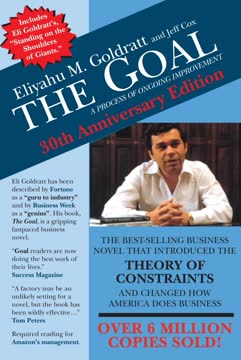
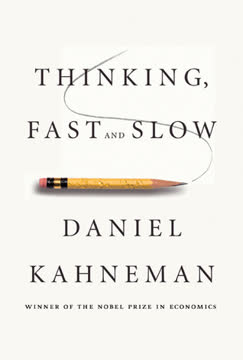
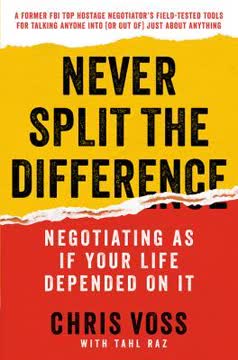
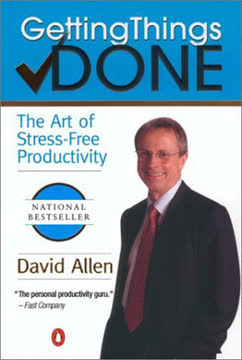

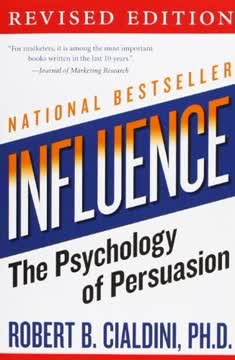


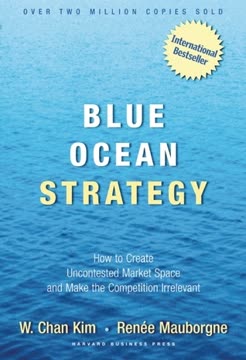
Download PDF
Download EPUB
.epub digital book format is ideal for reading ebooks on phones, tablets, and e-readers.






